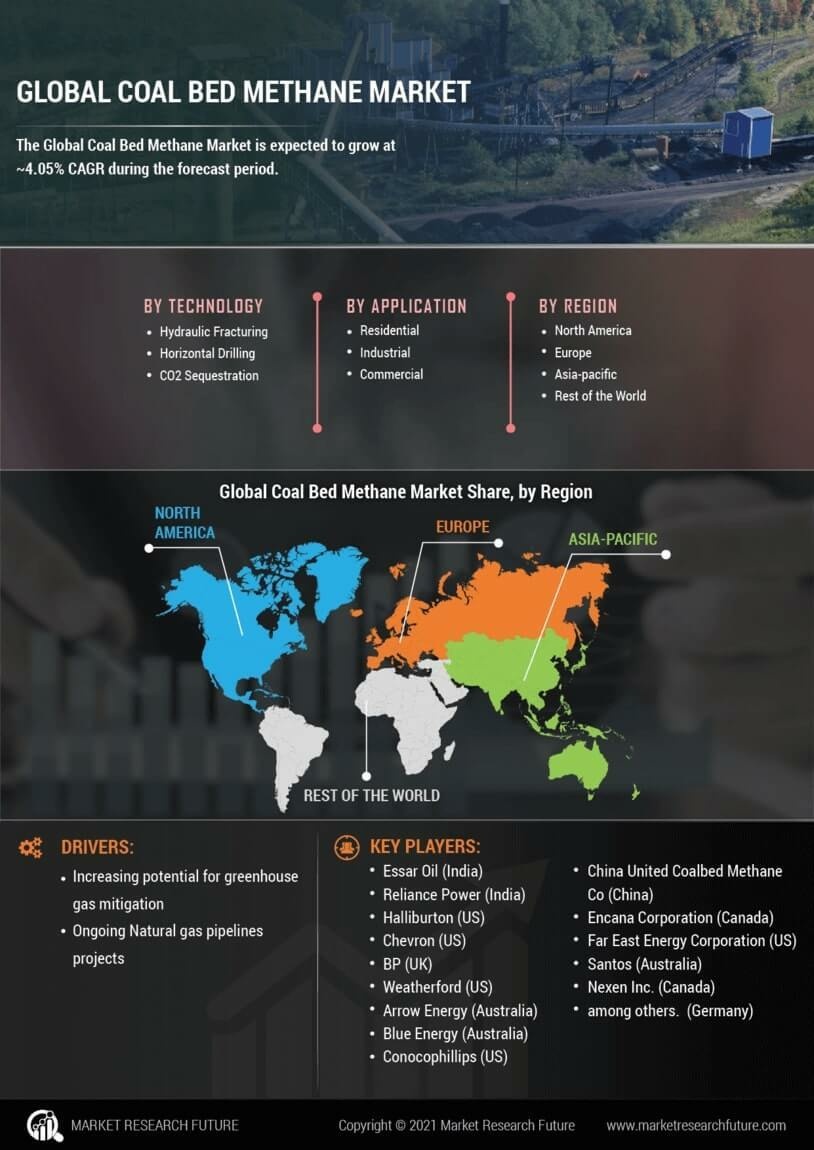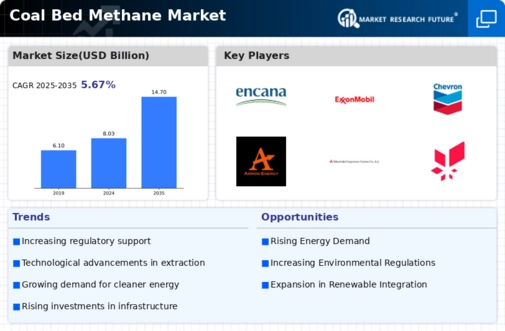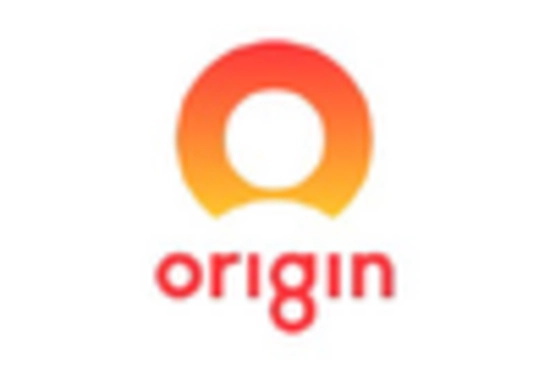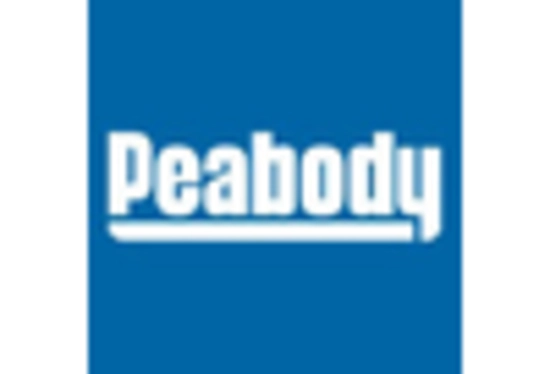Rising Energy Demand
The increasing The Coal Bed Methane Industry. As economies expand, the need for reliable and cleaner energy sources intensifies. Coal bed methane, being a cleaner alternative to traditional coal, is gaining traction. In 2025, the demand for natural gas, including coal bed methane, is projected to rise by approximately 3.5% annually. This trend indicates a shift towards more sustainable energy solutions, positioning coal bed methane as a viable option to meet energy needs while reducing carbon emissions. The Coal Bed Methane Market is likely to benefit from this growing demand, as it aligns with the global transition towards cleaner energy sources.
Environmental Regulations
The implementation of stringent environmental regulations is influencing the Coal Bed Methane Market. Governments are increasingly mandating cleaner energy sources to combat climate change and reduce greenhouse gas emissions. This regulatory landscape encourages the adoption of coal bed methane, which emits fewer pollutants compared to conventional fossil fuels. In 2025, it is anticipated that more countries will introduce policies favoring natural gas over coal, further propelling the coal bed methane sector. The Coal Bed Methane Market stands to gain from these regulatory shifts, as they create a favorable environment for investment and development in cleaner energy technologies.
Technological Innovations
Technological advancements play a crucial role in enhancing the extraction and utilization of coal bed methane. Innovations in drilling techniques, such as horizontal drilling and hydraulic fracturing, have significantly improved the efficiency of coal bed methane extraction. These technologies enable operators to access previously unreachable reserves, thereby expanding the potential of the Coal Bed Methane Market. Furthermore, advancements in monitoring and data analytics enhance operational efficiency and safety. As of 2025, the integration of artificial intelligence and machine learning in exploration and production processes is expected to optimize resource management, potentially increasing production rates and reducing costs in the Coal Bed Methane Market.
Investment in Infrastructure
Investment in infrastructure is a significant driver for the Coal Bed Methane Market. The development of pipelines, processing facilities, and transportation networks is essential for the efficient distribution of coal bed methane. In recent years, there has been a noticeable increase in funding for infrastructure projects aimed at enhancing the supply chain for natural gas. By 2025, it is projected that investments in infrastructure will continue to rise, facilitating the growth of the coal bed methane sector. This investment not only supports the operational aspects of the Coal Bed Methane Market but also enhances its competitiveness against other energy sources.
Growing Awareness of Energy Security
The increasing awareness of energy security is shaping the Coal Bed Methane Market. Nations are recognizing the importance of diversifying their energy sources to mitigate risks associated with reliance on imports. Coal bed methane, being a domestically sourced energy option, offers a strategic advantage in enhancing energy independence. As countries strive to secure their energy future, the demand for coal bed methane is likely to rise. In 2025, it is expected that more governments will prioritize investments in domestic energy resources, thereby bolstering the Coal Bed Methane Market and its role in achieving energy security.


















Leave a Comment